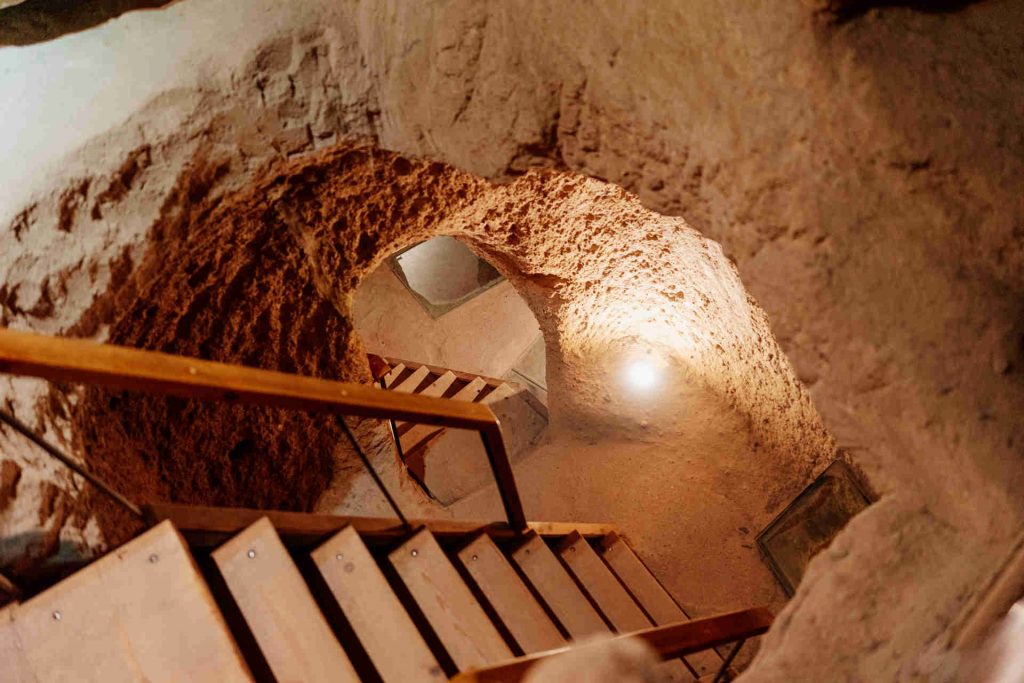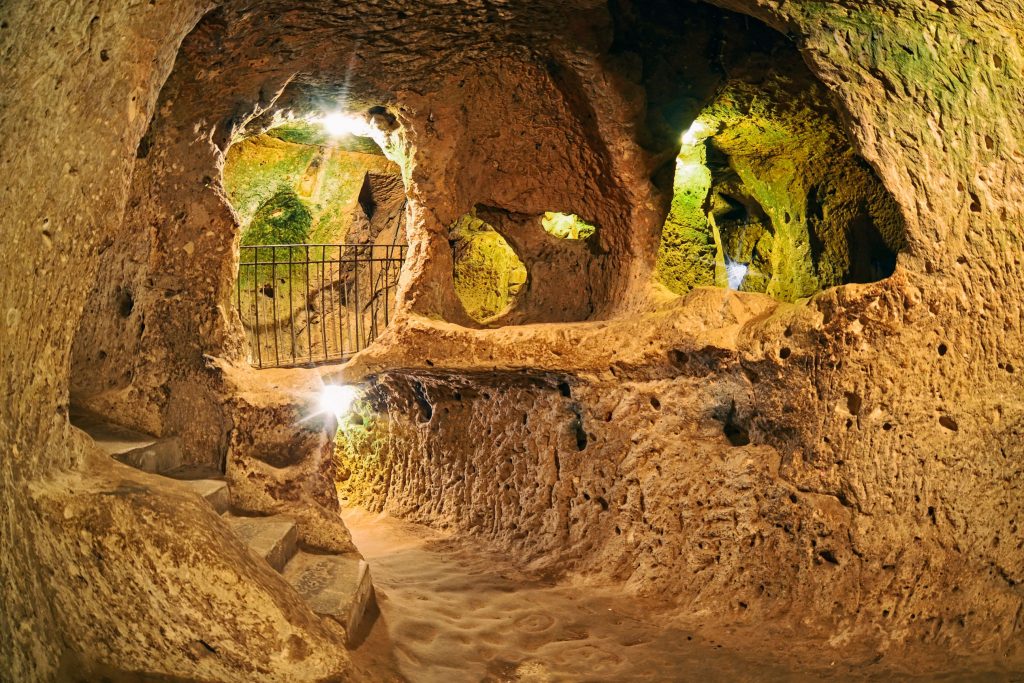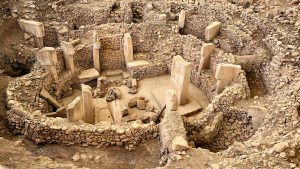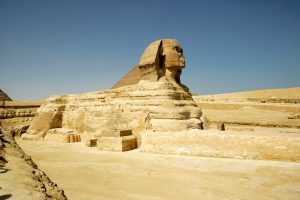In 1963 a man with a group of workers in Cappadocia region of central Anatolia in Turkey were renovating house. As they began to dig, they suddenly stumbled upon an opening in the ground. Curious, they decided to investigate further and descended into the darkness. As they explored the underground chamber, they were amazed to find that it was part of a much larger network of interconnected rooms, corridors, and tunnels.
The workers quickly realized that they had stumbled upon something truly extraordinary, and they immediately alerted the authorities.

This underground city extended to a depth of approximately 60 meters (200 feet) and was filled with a variety of amenities, such as stables, cellars, and chapels, as well as various defense features, such as gates and secret tunnels.
Physical Characteristics

One of the most striking features of Derinkuyu is its complex layout, which includes a number of different levels and chambers. The city is believed to have had at least eight levels, each with its own set of rooms and amenities. These levels were connected by a series of narrow stairways, which allowed people to move easily between them.
In addition to its underground rooms, Derinkuyu also had a number of amenities, including stables, cellars, and chapels. These spaces would have been used for various purposes, such as storing food, sheltering animals, and conducting religious ceremonies.
Another important feature of Derinkuyu was its ventilation system, which allowed people to live underground for extended periods of time. The city had a number of ventilation shafts and openings, which provided fresh air and allowed for the circulation of air throughout the underground chambers.
Overall, the physical characteristics of Derinkuyu are a testament to the ingenuity and resourcefulness of its ancient inhabitants. The city’s underground chambers and amenities were carefully designed to meet the needs of its residents, and its ventilation system allowed people to live and work underground in relative comfort.
But that is not all. In addition to Derinkuyu, there are several other underground cities in the Cappadocia region, including Kaymaklı, Özkonak, Mazi, Tatlarin, and Gaziemir. Some of them are of similar size. These underground cities are all unique in their own way, and they offer a fascinating glimpse into the history and way of life of the ancient people who lived in the Cappadocia region.
Who and when build the city of Derinkuyu

The city of Derinkuyu is widely believed to have been built in the 8th or 7th century BCE. At this time, the region was inhabited by a number of different cultures, including the Hittites, Persians, and Romans.
Derinkuyu was likely built as a place of refuge and protection during times of conflict, and it was designed to accommodate up to 20,000 people. The city’s underground chambers and tunnels provided a secure and defensible location, and its various defense features, such as gates and secret tunnels, would have helped to deter attackers.
In addition to serving as a place of protection, Derinkuyu was also an important center of trade and commerce. Its underground chambers and tunnels provided a safe and secure location for the storage and transportation of goods, and the city’s various amenities, such as stables and cellars, would have supported the needs of merchants and travelers.
Throughout its history, Derinkuyu played a significant role in the cultural and economic life of the Cappadocia region. Its underground chambers and tunnels have been used for a variety of purposes, including as a place of refuge, a center of trade and commerce, and a site of religious and cultural significance.
Alternative views about possible origin

There are also alternative historical views and theories about its origin that have been proposed by scholars and researchers.
One theory suggests that Derinkuyu and other underground cities in the Cappadocia region were actually built by the Hittites, who inhabited the region from the 2nd millennium BCE to the 7th century BCE. According to this theory, the underground cities were used as storage and defense facilities, as well as for conducting trade and commerce.
Another theory proposes that the underground cities were built by the ancient Christians of Cappadocia as a place of refuge and worship during times of persecution. It is believed that the underground cities were used as hidden churches, where Christians could practice their faith in secret and escape the attention of their Roman oppressors.
Still other theories have suggested that the underground cities were used as monasteries or hermitages by Christian ascetics, or that they were built by the ancient Persians as part of a network of underground defense structures.
While these alternative views and theories have not been widely accepted by mainstream historians and archaeologists, they do highlight the ongoing debate and discussion about the origins and purpose of Derinkuyu and other underground cities in the Cappadocia region. Further research and study may help to shed light on these questions and provide a more complete understanding of the city’s history and significance.
Derinkuyu today

Today, Derinkuyu is a popular tourist destination, and visitors can explore its underground chambers and learn about its rich history and the way of life of its ancient inhabitants. The city’s discovery has contributed to our understanding of the cultural and historical context of the Cappadocia region, and it continues to be an important part of Turkey’s cultural heritage.


